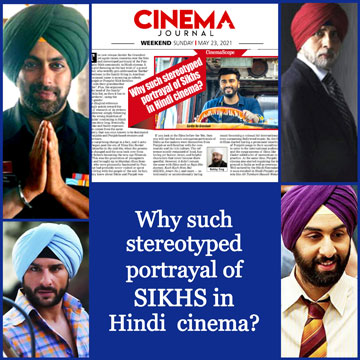
The new release Sardar Ka Grandson yet again raises concerns over the fake and stereotyped portrayal of the Punjabi/Sikh community in Hindi cinema. It has a plot focusing on the last wish of a grandmother, who weirdly gets addressed as ‘Sardar’ by everyone in the family living in Amritsar. The unusual name is annoying as nobody in Punjab or Punjabi/Sikh families ever calls their grandmother ‘Sardar’. Plus, the argument of ‘the head of the family’ also falls flat, as then it has to be ‘Sardarni’, using the right gender.
The illogical reference strongly points toward the lack of research of its writers and director, simply following the ‘the wrong depiction of Punjabis’ continuing in Hindi cinema since long. Ironically, the fake and faulty representation comes from the same industry that was once known to be dominated by Punjabis and Punjab-based creators and performers.
The surprising change is a fact, and it actually began post the era of films like Border and Maachis in the mid-90s, when the generations changed and the sons took over from their fathers becoming the new-age filmmakers. This was the generation of youngsters born and brought up in Mumbai (then Bombay), who were pleasantly fascinated by Punjab but had probably never visited or spent days living with the people of the soil. In fact, all they knew about Sikhs and Punjab was through the popular Punjabi music albums/videos of the ‘90s, the stories spread about Sikhs post the tragic ‘80s and Santa-Banta jokes irresponsibly cracked within their friend circle, not having an iota of knowledge about the community.
If you look at the films before the ‘80s, then you will not find such outrageous portrayals of Sikhs as the makers were themselves from Punjab or well familiar with the community and its rich culture. The reference mostly remained of loud, fun-loving yet honest, brave, and helpful characters that never became disrespectful. However, it didn’t remain the same with films such as Raja Hindustani, Kuch Kuch Hota Hai (KKHH), Anari No.1, and more - intentionally or unintentionally laying the foundation of a problematic tradition. Reportedly KKHH also had to face objections for its insulting sequences in specific regions, but the scenes (featuring the Sikh kid and Johny Lever) still can be seen in its existing version.
The new millennium began with Punjabi music becoming a colossal hit internationally, even surpassing Bollywood music. So, the Hindi films started having a prominent insertion of Punjabi songs in their soundtracks to cater to the international audience, and the mega-success of films like Gadar added a lot of momentum to the practice. At the same time, Punjabi cinema also started regaining the lost ground in India as well as overseas. Well noticed by the Hindi filmmakers, it soon resulted in Hindi-Punjabi projects like Ab Tumhare Hawale Watan Sathiyon, multiple films on Bhagat Singh, Lage Raho Munnabhai, Love Aaj Kal, Heroes, Oye Lucky Lucky Oye, Rocket Singh (the best of them all) and Singh Is King. The projects started a new trend of Bollywood heroes appearing as turbaned Sikhs on the screen, bringing ‘the respect factor’ back.
This grew even bigger when Punjabi cinema delivered worldwide top-grossers like Jatt & Juliet and Carry on Jatta. Such was the humongous success of these films (followed by more), that Hindi Cinema had to welcome an authentic turbaned Sikh from Punjab as the lead hero of their films paired with the top heroines, making way for the star Diljit Dosanjh. And that’s how destiny completed a circle of Karma, when Karan Johar featured in a film led by Diljit, a Sikh hero from Punjab, representing the community he made fun of in his debut film two decades back.
Thankfully, a better awareness was seen post the arrival of Diljit and the social media emerging as the new platform for such discussions around 2014-15. But despite the changing scenario, a twin narrative was still found existing in Hindi cinema, with two kinds of contradicting thought processes of insult and respect together incorporated in films like Udta Punjab, A Flying Jatt, and Santa Banta Pvt. Ltd (all released in the year 2016). The same confusing narrative was again witnessed in Kesari (2019). Though the film was about the unbelievable history of 21 brave Sikh soldiers, it still presented them in a light, comical tone in its first staff, which wasn’t expected and could have been avoided.
Coming back to Sardar Ka Grandson, it repeats the mistake of misrepresenting the community in terms of language and culture, continuing with the same twin narrative. Interestingly, when I posted about it on Twitter, a Bollywood fan from overseas replied, “I’m Polish and know almost nothing about Punjabi families, but even I found very strange they called their grandma Sardar”.
I hope that conveys it all, taking the message forward, seeking a change.
Cheers!
Bobby Sing
bobbytalkscinema.com
NOTE : The article was first published in THE FREE PRESS JOURNAL Newspaper (Mumbai Edition) on 23rd May 2021.

